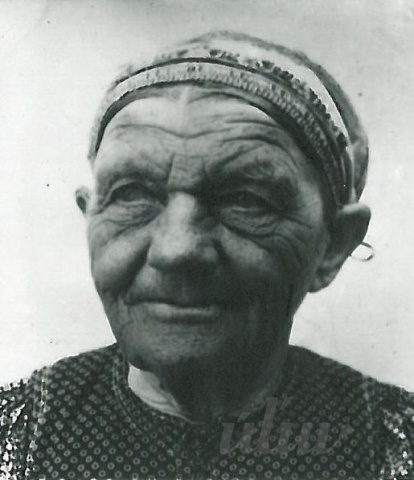Her painting work was known among the professional public already at the beginning of the 20th century. In 1906 she created a wall painting for the villa of Dušan Jurkovič in Žabovřesky or for the foyer of Vesna in Brno, she painted the arches of the kitchen for an exhibition in Paris, and later the house in Čataj for the...
Her painting work was known among the professional public already at the beginning of the 20th century. In 1906 she created a wall painting for the villa of Dušan Jurkovič in Žabovřesky or for the foyer of Vesna in Brno, she painted the arches of the kitchen for an exhibition in Paris, and later the house in Čataj for the exhibition of the Martin Etnographic Museum. Born in 1877 in Veľký Grob, she excelled in the quality of her artistic expression even as a girl. Artistically, she matured further after marrying into the nationally conscious Brinz family from Čataj in 1893. Her mother-in-law was one of the best folk painters and embroiderers, working for the Izabella workshop in Cífer. Young Katarína Brinzová soon became a mature and versatile artist. She began applying the technique used in wall paintings to decorating various types of furniture and also mastered the complex technique of embroidering with gold thread, which soon attracted young girls from all over Čataj to come learn from her. Her influence extended beyond her native village and Čataj, creatively influencing the wider region of Trnava. Her daughter also successfully followed in her footsteps, and after her parents’ return to the ancestral property in Veľký Grob in 1923, she took on the roles of scribe, embroiderer, and educator of future generations of artists and embroiderers in Čataj.
As a designer of embroideries and an active embroiderer, Katarína Brinzová created countless compositions in which she used mainly plant ornamentation, as found in traditional embroidery and in nature. The starting point for her wall painting compositions were stylized plant motifs in numerous variations, occasionally complemented by motifs of stylized birds. She used tempera or watercolor for painting, with a dominance of red or orange-red tones in her works. She used the color palette very sensitively, symmetrically breaking down the ornament. The stylized vase was the central motif growing out of the composition, richly filling the entire available surface. The tulip motif particularly stood out, with numerous variations in her painting expressions. For many years, the walls of the ÚĽUV store and exhibition hall on Michalská Street in Bratislava bore witness to her painting skills, which she decorated in 1954. Overall, Katarína Brinzová collaborated with ÚĽUV on a highly conscious principle. She was the only one for many years who embroidered flat embroidery on coarse canvas, typical of earlier periods of embroidery development in Čataj and Veľký Grob. At the suggestion of ÚĽUV’s artists, she also began using the technique of etching with nitric acid, not typical for her region. However, she demonstrated the uniqueness of her artistic sensibility, using goose eggs which, due to their size, better suited the nature of her drawing.
In the final stage of her life, as traditional wall painting decorations for kitchens were fading due to architectural changes in the Slovak countryside, she transferred ornamental painting to paper. This completed her forays into the realms of traditional painting, graphic, and embroidery arts. With the breadth of her scope, she was a true Renaissance figure of our traditional visual arts, always remaining faithful to her traditional environment, both in the composition and color of her works intended for urban settings, and in the unchanging nature of her personality. In 1959, she was awarded a certificate of qualification as a master of folk artistic production in the field of folk painting
